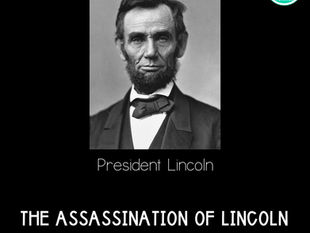
Are you a student learning about the Civil War? Are you a teacher preparing to teach about the Civil War? This website is for both of you! It will even be helpful if you are just curious about the Civil War.
If you are a student, you can read about the Battle of Fredericksburg in the sections below. If you have questions as you read, you can send me a message, and I will do my best to get back to you.
If you are a teacher, you can use this website as a resource for yourself and your students, or you can purchase my printable reading passages and comprehension questions. They are available at Teachers Pay Teachers.

The Battle of Fredericksburg
December 13, 1862
After the Union victory at the Battle of Antietam, Lincoln fired General McClellan because he failed to pursue Lee to Richmond to end the war. In November, Lincoln named Ambrose Burnside as the commander of the Army of the Potomac. Burnside and Lincoln were both anxious for an end to the war, so Burnside led his men straight toward Richmond.
Burnside planned to lead his 120,000 men through Fredericksburg, but the Rappahannock River was too deep to cross. The Union army had to wait for temporary bridges called pontoon bridges to arrive before they could cross the river. Due to a miscommunication, it took almost a month for the pontoon bridges to arrive. Burnside’s advantage from quickly moving his army was gone.
In Fredericksburg, Lee was able to station his army in preparation for the Union attack. His line of soldiers was almost three miles long. The most important Confederate position was at Marye’s Heights. Marye’s Heights was a hill the Union troops would have to climb to reach the town of Fredericksburg. By positioning themselves at the top of the hill, the Confederates would be able to stop any Union attacks.
On December 11, 1862, Burnside ordered his men across the Rappahannock River to attack Lee’s troops from the left and right. Union troops were able to fight through Stonewall Jackson’s defense, but another miscommunication meant that no reinforcements were sent to support them. Jackson mounted a counterattack and was able to push the Union troops back.
Marye’s Heights was a bloodbath. The hill the Union soldiers had to climb offered no protection from the Confederate shelling and gunfire. By the end of the fighting, the Union had suffered thirteen thousand casualties. More than two-thirds of the casualties came from Marye’s Heights. The Battle of Fredericksburg was a decisive win for the Confederates. The Union troops were unable to reach Richmond, and Lincoln fired Burnside.
Want to learn more about the Civil War? Check out the links below!
Causes of the Civil War
The Battle of Chancellorsville
The Battle of Spotsylvania Court House
The Second Battle of Cold Harbor
Surrender at Appomattox Court House





